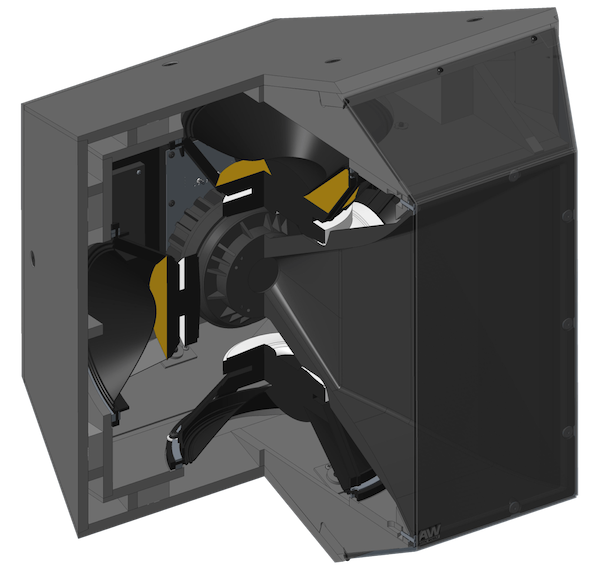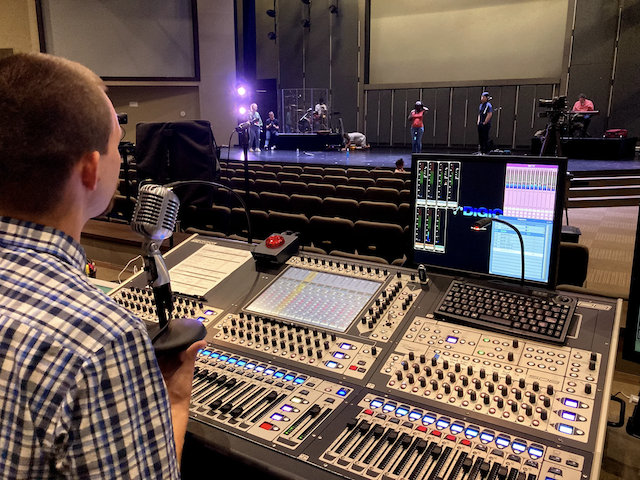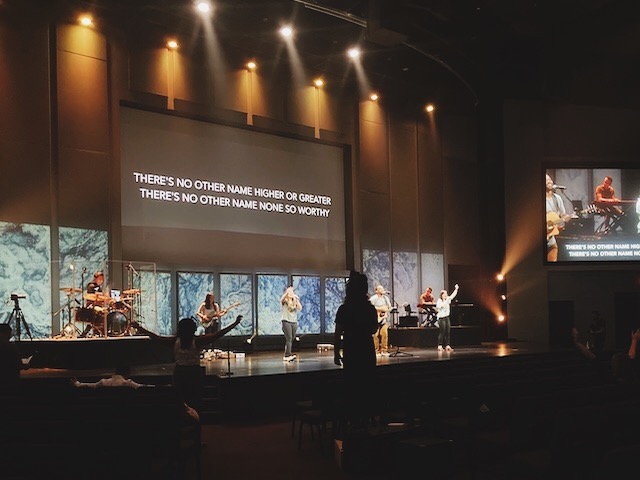Antioch Church had us out a couple weeks ago to do some touch-up maintenance on their system tuning. Fortunately I was involved in the last time that system got tuned about four years ago, and we made some significant progress on the system at that time. The client has been super happy with the system since then, but just had a couple things they wanted to check out. The first was verification that all system components are in tip-top shape. And second was a lack of clarity around 1khz that was illuding anything they could do from the console.

The system is based around clusters of EAW QX5 Loudspeakers. Each cluster consists of five boxes each; three long throw boxes on top and two short-throw boxes on the bottom. The Clusters are arranged in an L - C - R configuration, pretty common in the House of Worship space.
The EAW QX5 is a great loudspeaker; four 12-inch drivers provide low-frequency performance down to 55Hz. The coaxial mid-high driver provides excellent clarity throughout the vocal range and higher frequencies.
What we found working on the system a few years ago was that there was some smear and comb filtering around 1k, we theorized that there was a dip in pattern control in that range (MF/HF horn is ~12” across = 1Khz Wavelength), so we were able to hear that bandpass from all 5 boxes in a lot of the room. The overlap, even in the tight clusters, led to comb filtering and smear.
In order to test that theory, we arranged our microphones at several points in the coverage of that top center box and then compared the magnitude response of it with the boxes to either side, one at a time. The magnitude response showed overlap from both side boxes 90 degrees off axis (at the center of center box coverage) between 750 hertz and 1.5 kilohertz.
Based on these findings, we added an appropriate filter with 6 DB of attenuation to the center box. We chose the center box as this type of attenuation in any of the other boxes would have left holes at the outer edges of coverage. We then performed several a-b listening tests walking the coverage of the whole cluster. The clarity overall was improved with that filter, even though the impact was admittedly minor.
In addition to testing this theory, we found something we did not expect. There was a 0.75 millisecond delay on the long throw boxes in relation to the short throw boxes. As I recall, this improved the front to back low-frequency performance and shifted the acoustic image so that you are hearing more from the long throw boxes at the front of house console.
It should be noted here that FOH is directly on the transition point between LT and ST coverage. A measurement quickly shows 0.02 milliseconds difference between long and short. Additionally, one trend that has gained in importance over the past several years when it comes to tuning and loudspeaker design is Phase response. Earlier in my career we prioritized magnitude response and imaging, and didn’t really understand or worry about phase beyond relative delay times. For example, we would add 10 extra milliseconds to delay speakers so you imaged to the mains, even though you were listening to delays. This technique works great and is still applicable in many applications.
All that said, we found that delay time within a cluster behaves differently. The 0.75 milliseconds was effective at shifting the image outside of the booth. However, as revealed by the phase response, it created additional smear in the 1K range across a large portion of the room. When we took that delay time out, the phase response became linear at FOH while listening to the whole cluster. We did several A - B listening tests including myself as well as Blanton and John from the church. The difference was subtle, but we decided to move forward without any delay.
Later that evening we rolled into rehearsal. Overall the system was not significantly different than it was before, and we did not make any other major EQ changes. The first couple songs were led by volunteers, and they were just getting warmed up, so no major difference.
Then James Mark, the longtime worship leader of the Church started singing, and the light bulbs clicked on. Blanton and John both perked up and were like “whoa, that's different! I have never heard his voice that clear.”
Lesson learned: although you can shift the acoustic image with delay, it is usually going to sound better with proper time alignment and a linear phase response.


